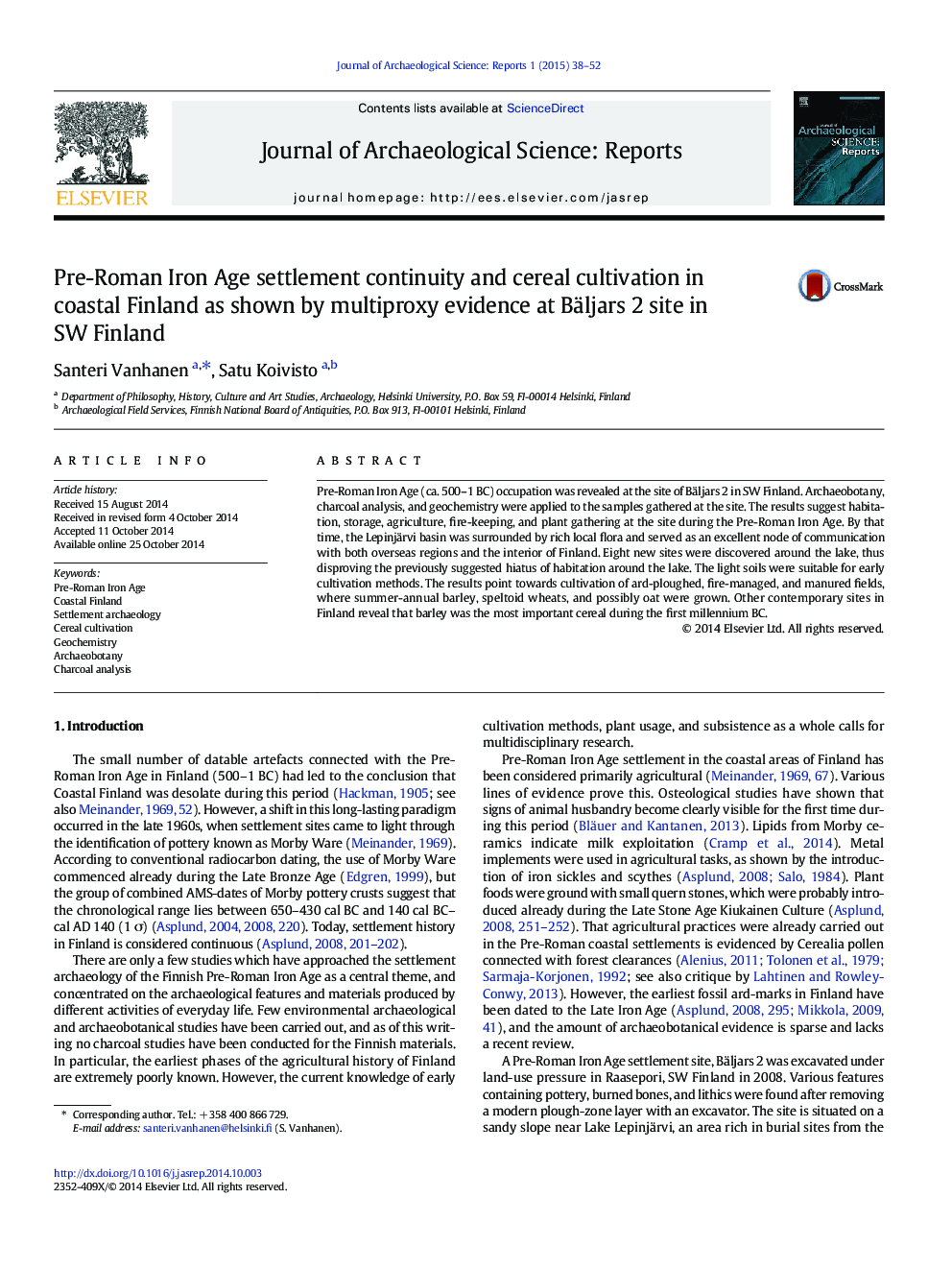| کد مقاله | کد نشریه | سال انتشار | مقاله انگلیسی | نسخه تمام متن |
|---|---|---|---|---|
| 1037803 | 1483942 | 2015 | 15 صفحه PDF | دانلود رایگان |
• Pre-Roman Iron Age (500–1 BC) habitation proved continuous around Lake Lepinjärvi.
• What may be the oldest ard marks in Finland were discovered.
• Summer-annual barley, speltoid wheat, and possibly oat seem to have been cultivated.
• It is suggested that the fields were manured, and managed with fire.
• Barley was the most common cereal in Finland during the first millennium BC.
Pre-Roman Iron Age (ca. 500–1 BC) occupation was revealed at the site of Bäljars 2 in SW Finland. Archaeobotany, charcoal analysis, and geochemistry were applied to the samples gathered at the site. The results suggest habitation, storage, agriculture, fire-keeping, and plant gathering at the site during the Pre-Roman Iron Age. By that time, the Lepinjärvi basin was surrounded by rich local flora and served as an excellent node of communication with both overseas regions and the interior of Finland. Eight new sites were discovered around the lake, thus disproving the previously suggested hiatus of habitation around the lake. The light soils were suitable for early cultivation methods. The results point towards cultivation of ard-ploughed, fire-managed, and manured fields, where summer-annual barley, speltoid wheats, and possibly oat were grown. Other contemporary sites in Finland reveal that barley was the most important cereal during the first millennium BC.
Journal: Journal of Archaeological Science: Reports - Volume 1, March 2015, Pages 38–52
